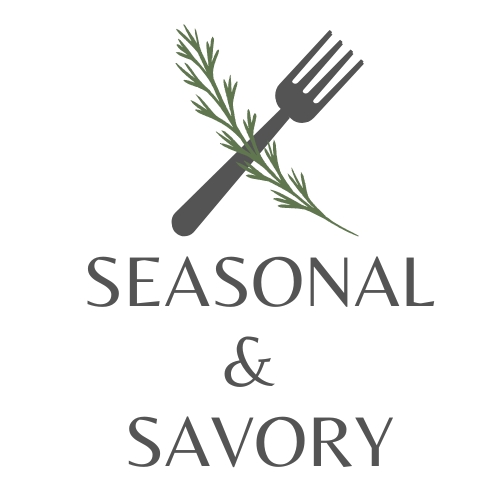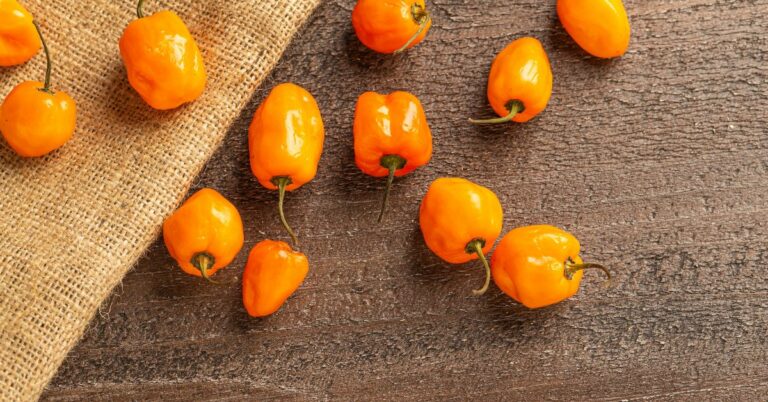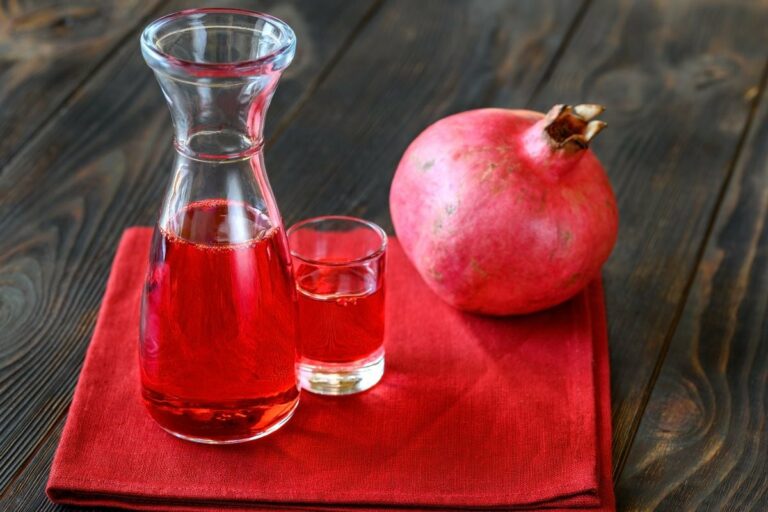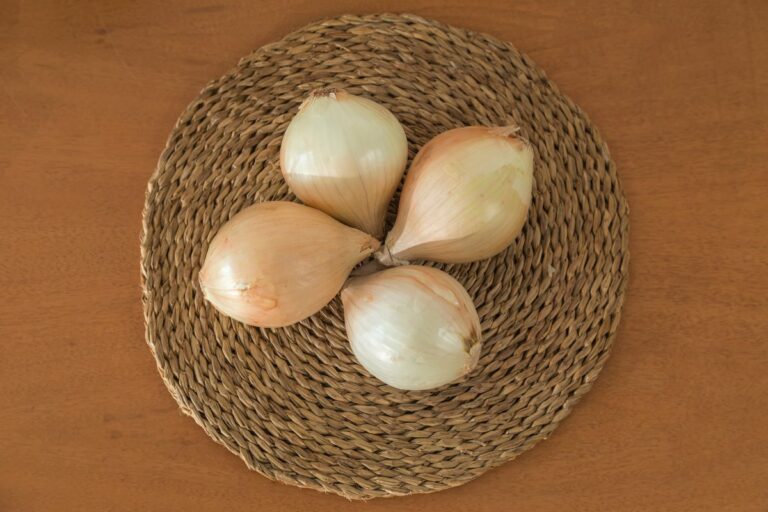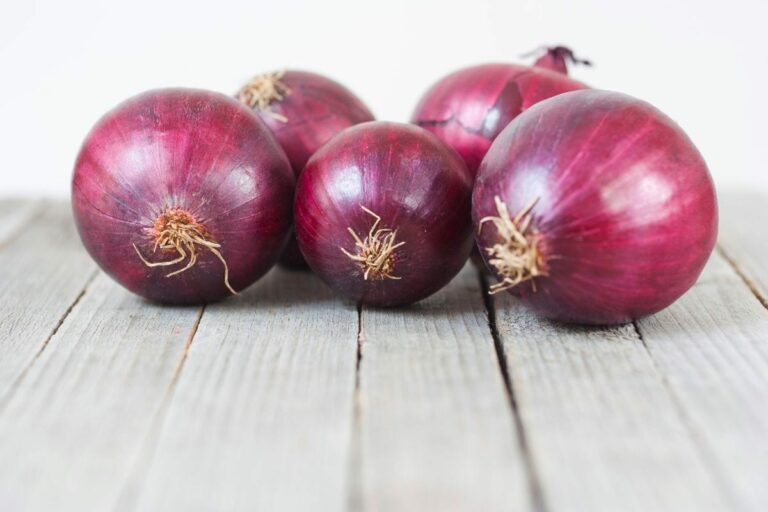7 Surprising Ingredients You Can Use as a Kohlrabi Substitute
In general, kohlrabi is a rare kind of vegetable with origins in European cooking. German turnips are another name for this strange-looking vegetable, which is renowned for flourishing in frigid climates. Despite being linked to kale and cabbage, kohlrabi has a quite distinct appearance and flavor.
In order to liven up your supper, this post will explore kohlrabi and several delectable kohlrabi substitutes such as Broccoli stems, Turnip, Radish, Swiss chard, Celeriac, Jicama, and Potatoes.
What Is Kohlrabi
Kohlrabi is a vegetable that grows underground. It features green leaves and a bulbous stalk. You can consume kohlrabi either raw or cooked. Potassium and vitamin C levels are elevated in this vegetable.
Some claim that the flavor of kohlrabi is a mix between turnip and cabbage. Kohlrabi can be steamed, stir-fried, or baked when prepared as a dish. Additionally, kohlrabi can be pickled or turned into slaw.
Green and purple kohlrabi are the two primary varieties. The most popular kind is green kohlrabi, which has white meat and light green skin. The flesh of Purple kohlrabi, on the other hand, is either white or pale yellow, with deep violet skin.
Preparation And Uses Of Kohlrabi
When consumed raw, kohlrabi is tasty and has a number of health advantages. Use a mandolin to grate the bulb, then combine it with celery salt and olive oil in a salad. Alternatively, consider using its green leaves in a sandwich or garden salad. Choose the young, fresh leaves since the aged ones become rough.
The uncooked kohlrabi bulb can be kept for up to two weeks in the vegetable crisper if it is placed in a plastic or paper bag. On the other hand, the leaves must be consumed Within three days.
Keep kohlrabi frozen for 10 to 12 months. The bulb should be diced and blanched for one minute before being drained, cooled, packed in sealable plastic bags, and frozen. Leave the kohlrabi whole and blanch for three minutes before freezing if you don’t want to cut it.
Best Substitutes For Kohlrabi
| Substitute | Best For | |
| 1. | Broccoli Stems | Stir-fries, Meat Roasts, Soups, Salads, Steamed vegetables |
| 2. | Radish | Salads, Roasts, Stews, Pickles, Soups, and Salad Dressings |
| 3. | Turnip | Salads, Slow-cooked meat, Sauteed vegetables, Puree, coleslaw, |
| 4. | Swiss Chard | Purees, Sautéing, Soups, Stews, Salad dressings |
| 5. | Celeriac | Stews, Salads, Salad dressings, Blanches, roasts |
| 6. | Potato | Puree, Soups, Roasted vegetables, meat roasts, sautéing |
| 7. | Jicama | Sautéing, Steamed vegetables, Stir-fries, Meat roasts, slaws, salads |
When looking for the perfect replacement for kohlrabi, you want a vegetable that is crisp to the bite and soft on the inside when cooked, not necessarily one that is cruciferous.
When cooked, you want it to have a sense of sweetness, and when served raw, you want it to go well with cucumber or zucchini. Additionally, as kohlrabi may be eaten both cooked and raw, the replacement should have the same versatility.
1. Broccoli Stems
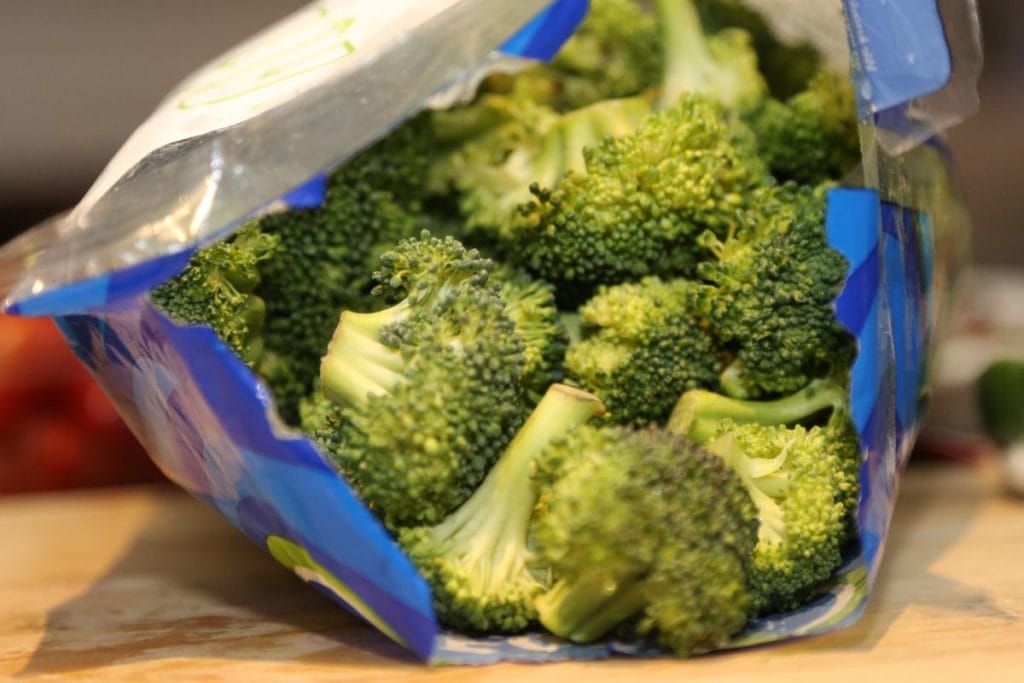
Broccoli stems would be the food item that tastes and feels the most like kohlrabi. Though delicate, sensitive, and juicy on the interior, they have thick, crispy skin. The broccoli stems are also suitable for stir-frying, steaming, and roasting even if they aren’t very spicy or sweet. With their mild flavor, broccoli stems go well in any kohlrabi salad or creamy soup and may be either raw or cooked.
Within minutes of adding salt and a drizzle of olive oil, you’ll be able to taste something that tastes almost like kohlrabi.
Broccoli stems are often removed while cooking broccoli since they are frequently rough. Thus, removing the stem’s outer covering before cooking helps keep the stem from being too fibrous. The broccoli stems will get softer and more kohlrabi-like after this phase. Both broccoli and kohlrabi are low in calories and abundant in dietary fiber and vitamin C.
2. Radish
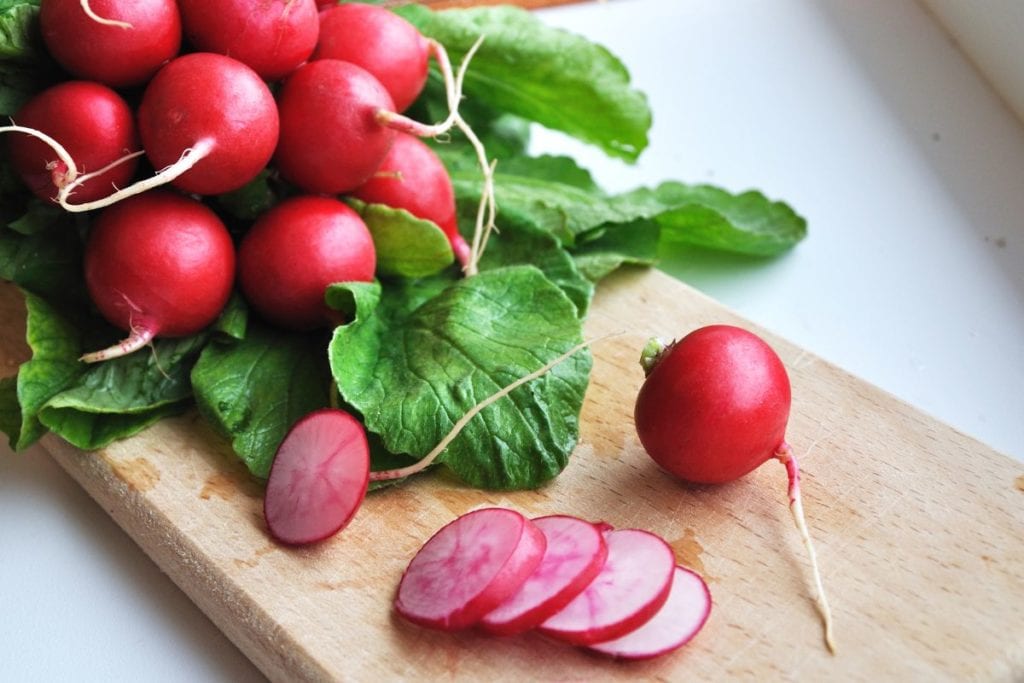
The way kohlrabi transforms sweetness into a more radish-bitter flavor makes it more comparable to radish. As kohlrabi ages, certain chemical changes cause it to turn bitter. For salads and pickles, radish can be a great substitute for kohlrabi because they both taste fantastic when thinly sliced and salted. Later, you may have that crispy snack with some butter.
A meal can be ruined by too much radish if you don’t like a strong peppery flavor. Slice a few radishes into salads, stews, and roasts that call for kohlrabi to make a tasty snack.
If you were intending to use the kohlrabi in a meal that would be served raw, like coleslaw, this substitution works best. Radishes can be cooked, but doing so makes them lose a lot of their texture, so try to just eat them raw.
3. Turnips
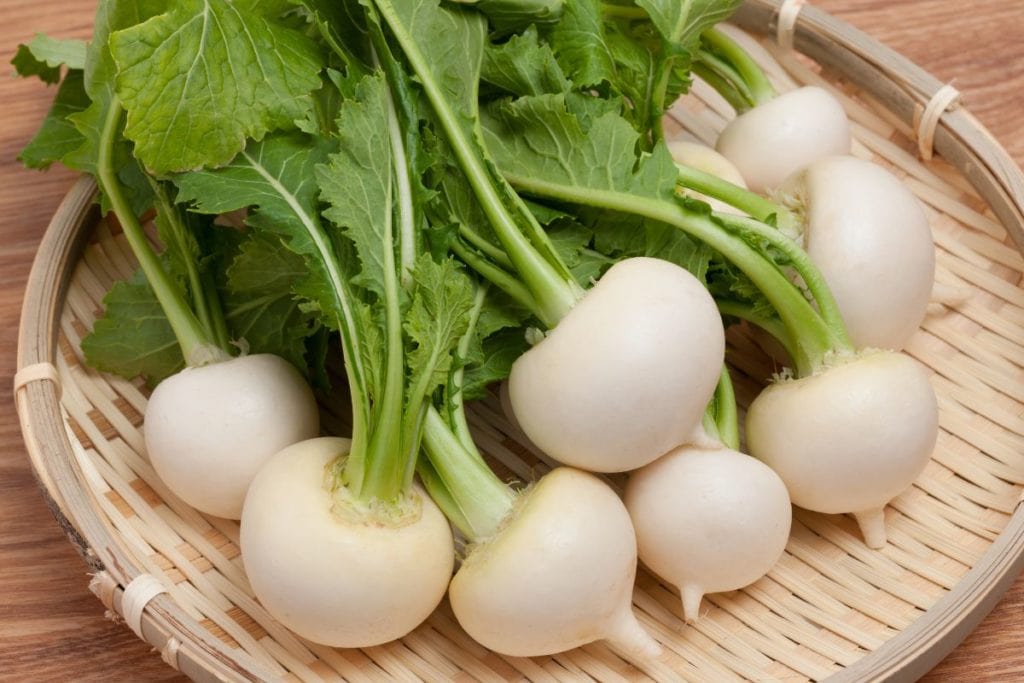
The brassica vegetable family includes turnips and kohlrabi, and they can be used interchangeably. Turnips may be used in any kohlrabi dish despite the fact that kohlrabi is a little softer and doesn’t taste quite as sharp as turnips. Turnips that are green could not be as soft as turnips that are white.
Once cooked, turnips have a sweeter flavor and a more delicate consistency. It’s also crucial to remember that since you can’t utilize them raw, you must boil them. Turnips are extremely difficult to bite into when they are raw and have a strong, gritty taste.
When cooking green turnips, the best methods include slow cooking, sautéing, or mashing. With their crisp texture, green turnips might be an excellent complement to liven up your cuisine. If you want to replace kohlrabi in a dish with turnips, try substituting 1/2 cup of turnips for every 1 cup of kohlrabi. Depending on the recipe, you might need to change the other ingredients and cooking time.
4. Swiss Chard
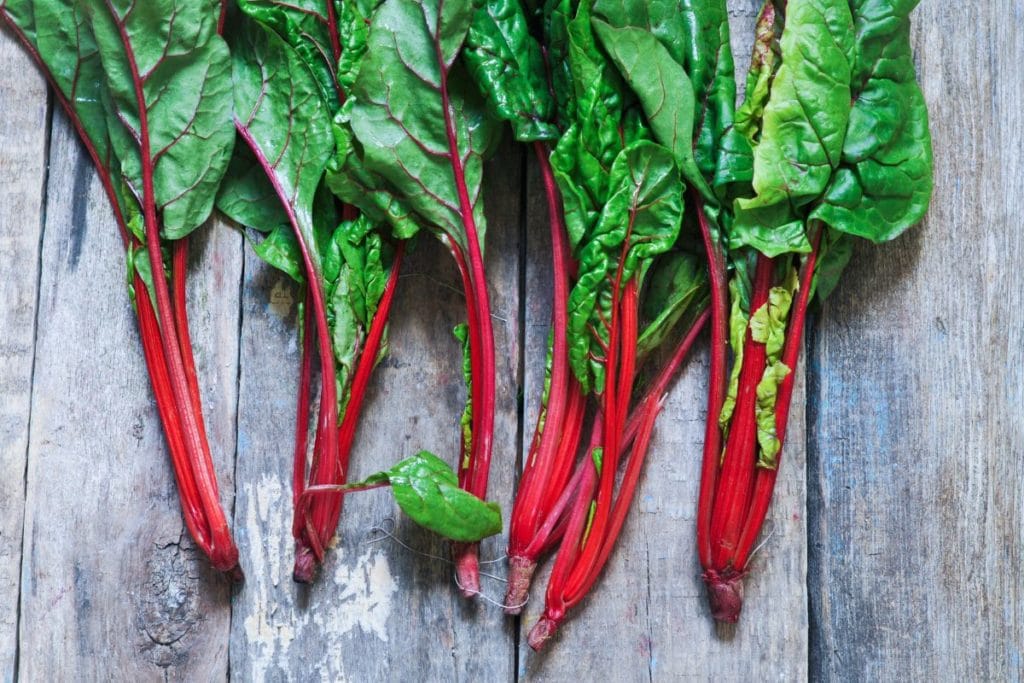
you may use swiss chard, which has a similar earthy, savory flavor to green kohlrabi. When uncooked, it also has a texture akin to kohlrabi. When eaten uncooked, Swiss chard might be a little bitter. But as soon as it’s cooked, the harshness disappears and is replaced by a mellow, sweet flavor akin to kohlrabi. Similar to green kohlrabi, Swiss chard is a superfood packed with beneficial elements including minerals and antioxidants.
You may use these vibrant greens in place of the kohlrabi leaves in a potato puree or soup. If that isn’t enough, try sautéing Swiss chard with bacon, garlic, and scallions and adding vinegar for flavor. Then you may enjoy a dish of sautéed kohlrabi with soft Swiss chard greens instead.
5. Celeriac
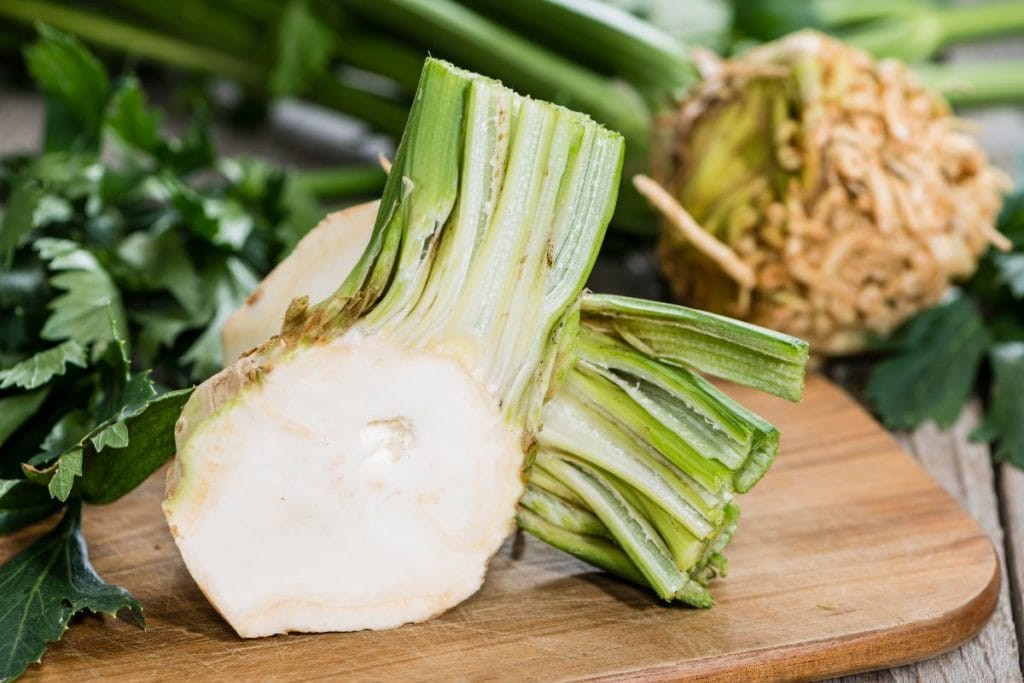
The bulb root portion of a celery plant is called celeriac. It has an odd-looking characteristic with borders of thick, rough skin that conceals its white meat, which when cooked is soft and chewy. It has an anticipated earthy and peppery flavor and goes nicely with creamy kohlrabi dishes. It’s comparable to potatoes.
The flavor of celeriac, which is similar to raw cabbage, is another aspect that you might relate to kohlrabi. Additionally, kohlrabi meals like stews, blanches, salad shreds, and roasts can easily be replaced with celeriac.
6. Potatoes
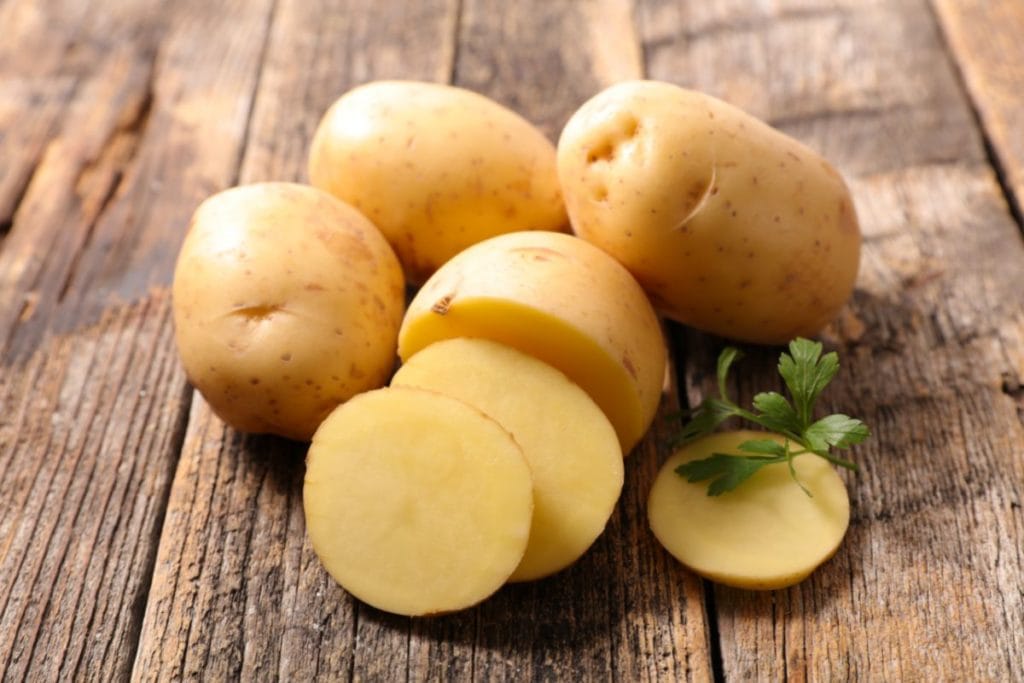
If you’re in a need, potato may be substituted in lieu of kohlrabi, however, it’s not a great alternative. The potato has a lot of starch and is rather dense. Your favorite kohlrabi dishes could get a fascinating new texture from the potato’s starchiness, though. Before using, give your potatoes a good wash and scrape to get rid of any possibly hazardous materials. After that, you may peel them if you’d like or chop them up as you wish.
Although eating raw potatoes is generally not a good idea, you may still use them in roasted, mashed, or chunky veggie kohlrabi soups. Use potatoes and sauté them with white onion, garlic, red pepper flakes, and pepper if you can’t locate kohlrabi at the store. Vegetables should be added before bringing it to a boil and simmering it until you can finally pour it into your immersion blender.
7. Jicama
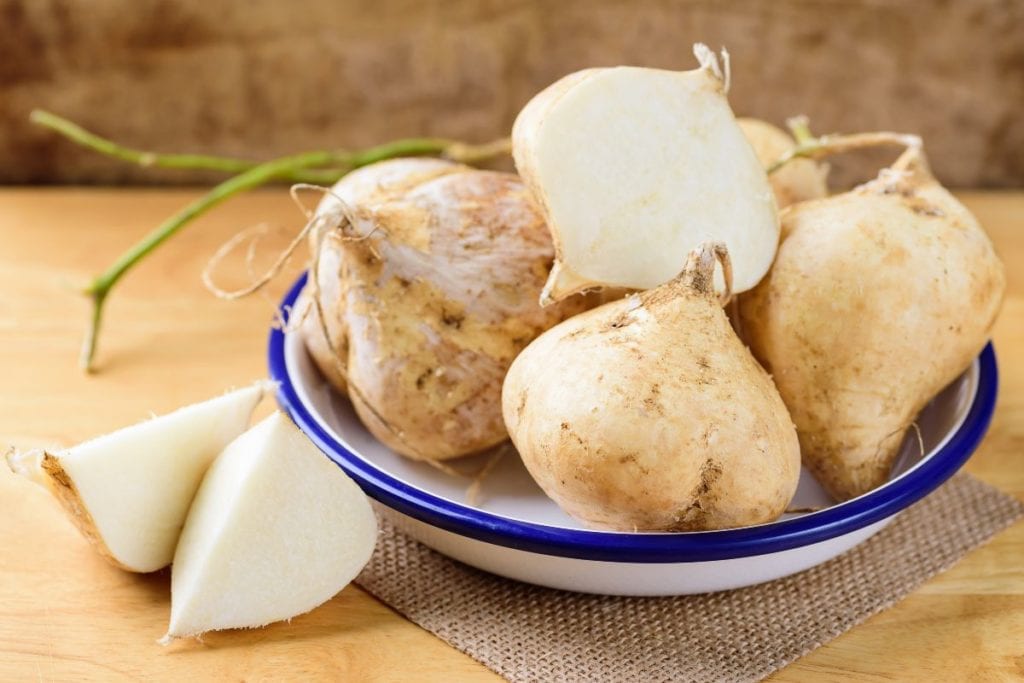
A common kohlrabi replacement is the root vegetable jicama. Jicama has a significantly higher water content than other vegetables, which makes it a fantastic option for meals that call for a lot of moisture.
Because of its crisp texture, jicama is frequently used in salads and slaws. Additionally, it can be stir-fried or roasted. Jicama has a taste that is somewhat nutty and sweet. You may boil, steam, cook, or sauté this root vegetable, which is also known as Mexican turnip. You can eat it raw just after peeling it.
However, before use, make sure it has solid roots that are free of imperfections. Stay away from those with soft or wrinkled skin.
The refrigerator is a good place to keep jicama for up to two weeks. Make careful to securely cover it in plastic to prevent drying out.
Bottom Line
An adaptable and very versatile vegetable- kohlrabi may be utilized in a variety of cuisines. In various regions of the world, nevertheless, it could be difficult to locate. Growing your own kohlrabi is an alternative if you can’t obtain it locally. Kohlrabi is a resilient plant that is simple to cultivate, provided you have the proper temperature. If you lack the room or a green thumb to produce veggies, you can consider utilizing a kohlrabi replacement. In recipes, a variety of choices explored above will work just as well.
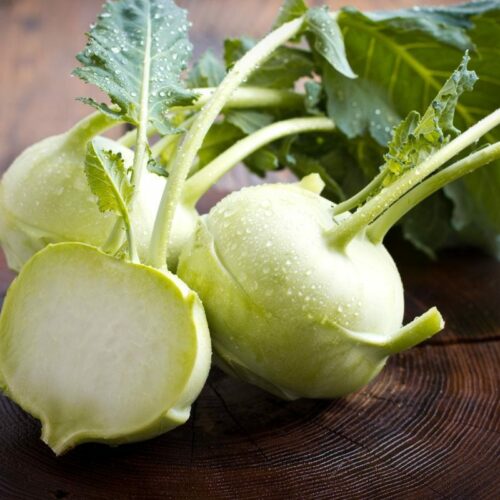
7 Best Substitutes For Kohlrabi
Ingredients
- Broccoli Stems
- Radish
- Turnip
- Swiss Chard
- Celeriac
- Potato
- Jicama
Instructions
- From the list of substitutes above, pick your favorite to use in its place.
- Use your imagination and be creative with these substitute recipes!
